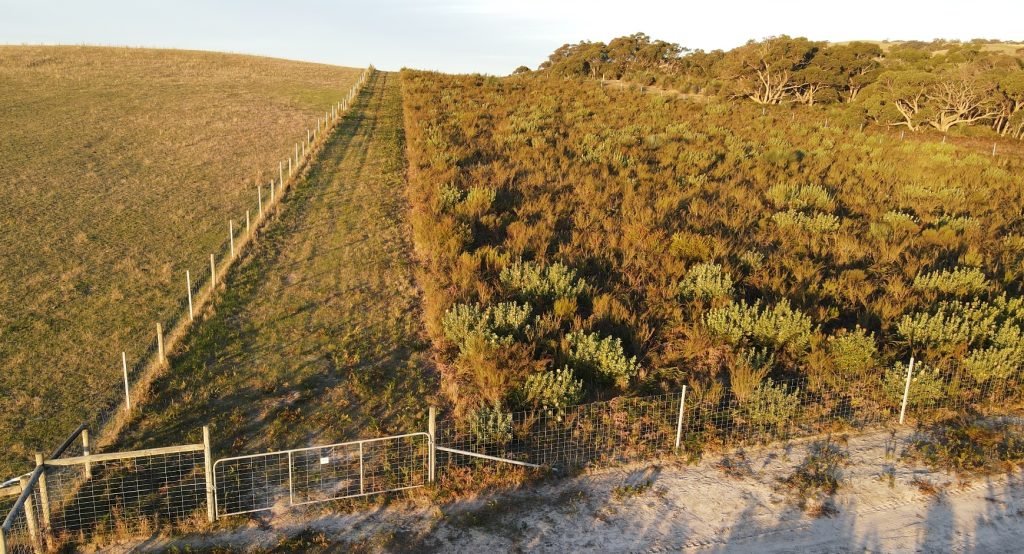Let’s explore why ecological restoration is about more than just planting trees
At NGT we are passionate about sharing the complexity of the natural world with you, and hopefully motivating or inspiring you to join us as we seek to put back some of the missing ingredients within our ecosystems. Sharing complex concepts in plain language is not always easy, but we think is incredibly important. What we often see play out in the media are simplified messages that do not address the nuances of complex topics. When oversimplified there is a risk of distorting the wider public (or even political/policy) perception of environmental problems that exist and – also crucially – the required solutions.
This idea has been in my mind of late, as the proposed Nature Repair Market Bill, which is currently before the Australian parliament has been in the media. The Nature Repair Market will seek to encourage voluntary private sector investment into restoring Australia’s natural environment.
If set up and designed well, i.e. with this complexity in mind, the Nature Repair Market promises to be a new and important tool that enables us to help farmers and other land managers invest in activities that restore, recover and protect biodiversity. Of course we also know from various other incentives and markets that have come before, there are potential pitfalls and the ever-present risk of unintended perverse consequences. Markets also have a habit of attracting new players and even potentially ‘middle men’ who are looking for opportunities to speculate or ‘game the market’ for short-term private economic gain, not necessarily motivated by the altruistic objectives for which it may have been established. Somehow the Nature Repair Market will have to counteract these very real risks and influences. Consistent with other markets, this means having the right framework and ‘rules of engagement’ in place.
And then of course there is the underlying complexity of nature and natural systems. Ecosystem types vary widely across the landscape and include grasslands, sedgelands, heathlands, saltmarsh, wetlands, shrublands, woodlands, and forests – just to name a few!
When I think about the requirements of successful heathland restoration as an example, I think of a place like Stipiturus Conservation Park, where and intensive restoration program over many years has led to spectacular results being achieved. But the cost to achieve these results is immense, because the number of stems that have to be planted to created the appropriate density to restore a heathland is very high, and due to an overabundant kangaroo population in this area, a high kangaroo fence was also required to enclose the revegetation areas. Throw in site preparation and intensive follow-up weed control and you have some idea of what is involved to get the spectacular results you can see below.

The point of sharing this example is to illustrate that no two ecosystem types have the same cost or indeed feasibility of repair, and the range of ingredients required to ‘repair’ nature are equally diverse. At NGT we are committed to restoring ecological function and the core elements that drive ecosystem health and recovery, which means having clear goals for any restoration project and ensuring that it fits the landscape where it is proposed. Ensuring this professionally informed, nuanced and science-driven perspective will be complementary with any new market driven approaches, is the key to success.

Interestingly this means that for many habitats, it is not about simply planting trees (because yes, many ecosystems have no trees at all!), and often needs to consider a number of other key ingredients and drivers to achieve sustainable recovery. This is a topic I explained in this webinar a couple of years ago (the trimmed video of my presentation can also be viewed directly below).
Indeed the concept of ‘other ecological drivers’ equally also applies even in those cases when a project may be primarily about planting trees, as indicated in this fascinating story about leaf litter transplants to improve the ecological diversity and function of revegetation sites.
If you are interested in the science of best-practice environmental restoration, then I encourage you to pay attention to the development of the Nature Repair Market and to contribute your ideas, as this area of policy is fine-tuned and the all-important detail of the mechanics of this new market emerges.
Finally, in case you are wondering, what would I personally like to see?
As I explained to the ABC Radio Victorian Country Hour on the 30th March, I would like to see expert ecological practitioners who know how to ‘read the landscape’ having access to all the tools they need, to be able to encourage the right nature repair projects to happen in the right places, using the right methods. For just one specific example, please click this link to learn what ‘reading the landscape’ (from a wetland restoration point of view) looks like to enable tailored restoration solutions.
We also need to make sure that anyone who starts a nature repair project after the new legislation comes into law, will be eligible, even if their project is not immediately supported by an approved method. This is important because given the diversity of ecosystem types in Australia and the tools needed to manage them, much restoration work is unlikely to be covered by an approved method in the first instance and – in this, the UN Decade of Ecosystem Restoration – we certainly wouldn’t want to deter people from commencing these important projects as soon as possible.
Finally, if you would like to hear the ABC Radio interview referred to above, then please hit play on the audio player below:
